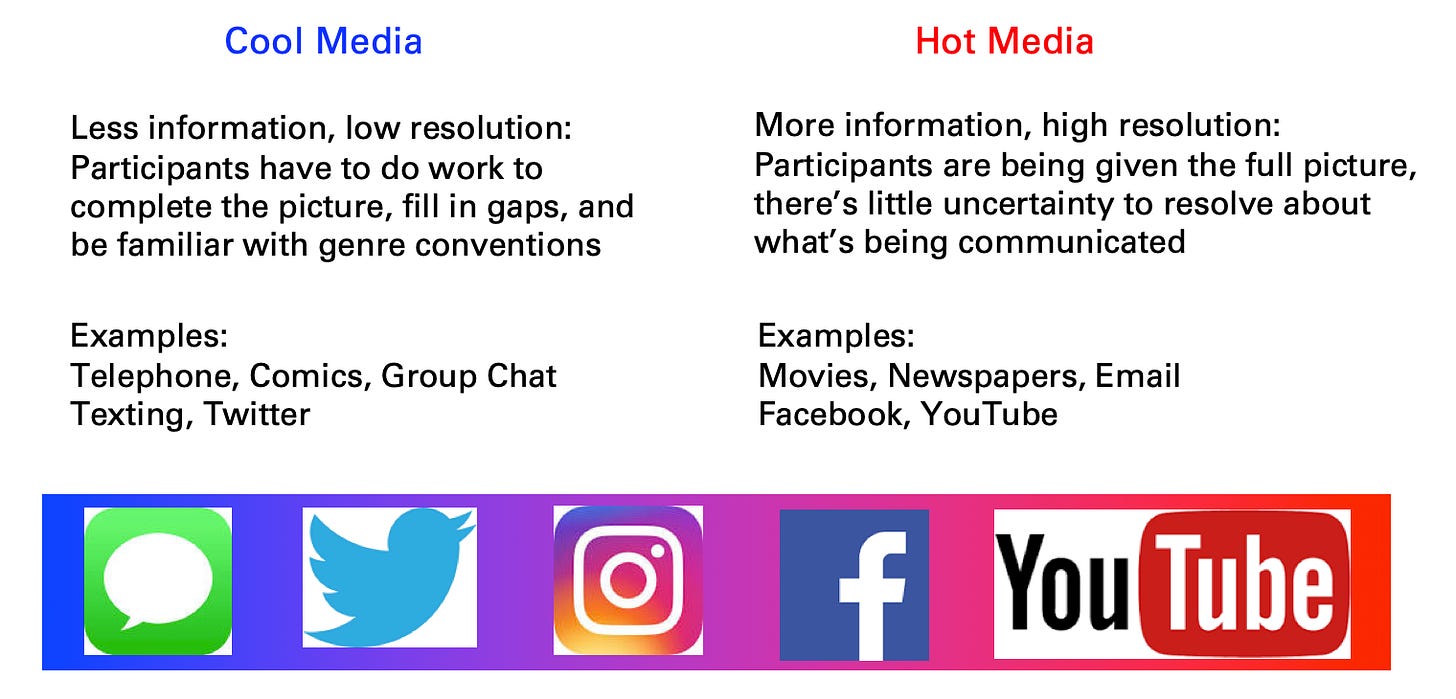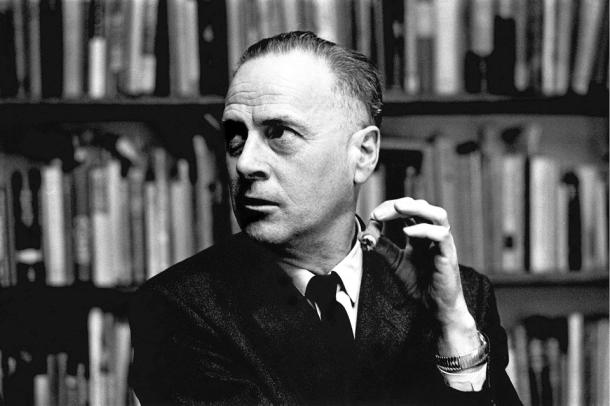Marshall McLuhan, a prominent figure in the study of media theory, introduced the concepts of ‘hot’ and ‘cool’ media as a way to analyze how different forms of communication impact society and the individual. These ideas, although developed in the 1960s, remain relevant as we navigate the complexities of modern media landscapes, particularly in the age of digital and social media.
McLuhan described ‘hot media’ as those that provide a high level of detail and sensory engagement, effectively minimizing the audience’s participation. Examples of hot media include photographs, films, and radio broadcasts. These forms of media are characterized by their clarity and the singular focus on one sensory experience. For instance, a movie engages viewers with rich visuals and sound, allowing them to absorb information passively without needing to fill in gaps with their imagination.
On the other hand, ‘cool media’ require a greater degree of participation and engagement from the audience. This category includes television, comics, and telephone conversations, which are often less clear and demand active involvement. McLuhan argued that cool media necessitate audience interaction to make sense of the content presented. For example, television shows may prompt viewers to interpret visual cues and engage in discussions, making them more participatory than the more passive experience of watching a film.

One crucial aspect of McLuhan’s theory is the concept of participation. In hot media, the audience is less involved; they are simply receivers of information. In contrast, cool media foster a sense of community and interaction among viewers. This dynamic is particularly relevant today as social media platforms like Facebook and Twitter epitomize cool media by encouraging users to actively engage, share, and create content.
As we explore new media, McLuhan’s theories can help us understand the implications of technology on social interactions. The rise of social media has blurred the lines between hot and cool media, creating a hybrid environment where users can consume and produce content simultaneously. For instance, a live-streaming event allows viewers to watch (hot media) while also engaging through comments and reactions (cool media). This interactive experience transforms the audience’s role from passive consumers to active participants, reshaping how we communicate and connect with one another.
Moreover, McLuhan warned of the potential dangers of over-reliance on hot media. He suggested that excessive clarity could lead to a fragmentation of experience, as individuals become more isolated in their consumption of detailed, focused content. As we witness the growing dominance of high-definition streaming services, we must remain mindful of balancing our media consumption to foster meaningful interactions.
In conclusion, McLuhan’s concepts of hot and cool media offer a valuable framework for understanding the evolving media landscape. As new media continues to develop, his insights remind us of the importance of participation, engagement, and the social implications of our media choices. By critically examining our interactions with various forms of media, we can better navigate the complexities of communication in the digital age.
Reference:
Unknown Torontonians: Marshall McLuhan (2014) The Julie Kinnear Team of Toronto Real Estate Agents. Available at: https://juliekinnear.com/blogs/famous-torontonians-marshall-mcluhan (Accessed: 04 November 2024).
Danco, A. (2019) The Audio Revolution, part one, The Audio Revolution, Part One. Available at: https://danco.substack.com/p/the-audio-revolution-part-one (Accessed: 04 November 2024).


Hey Siyao! Your essay gives an incisive study of McLuhan’s “hot” and “cool” media notions, particularly as they apply to today’s digital world. The divide McLuhan makes between media that require active audience engagement (cool) and those that provide passive, detail-rich experiences (hot) is still very important, especially with the emergence of interactive platforms such as social media. Today’s hybrid media contexts, such as live-streaming events, blur the lines between passive viewing and active interaction. Excellent analysis!
But please forgive me; in my personal opinion, I think while the page includes examples, it might provide a more clear explanation of why some media fit into one category over another. For example, addressing why television is “cool” and cinema is “hot” might help to clarify contrasts. But overall, amazing work!